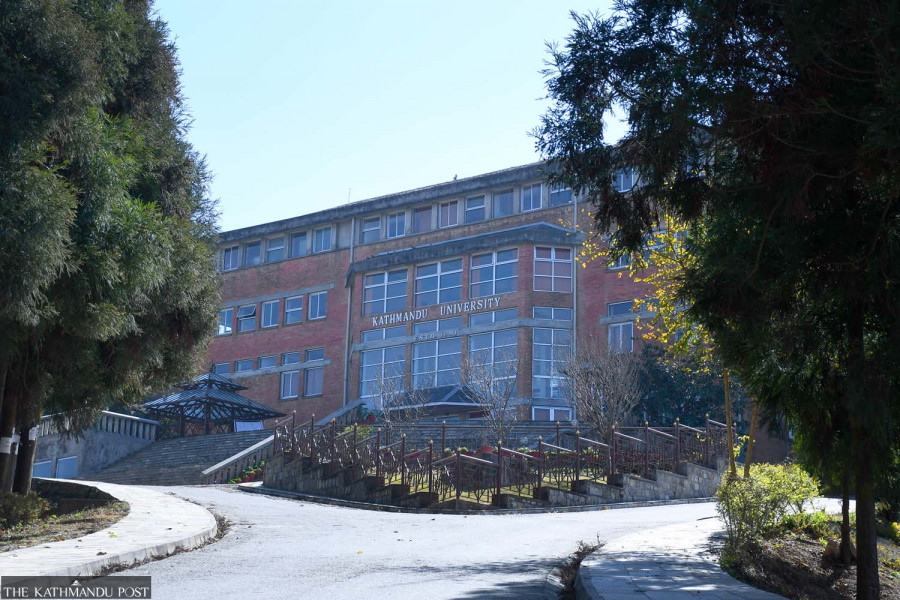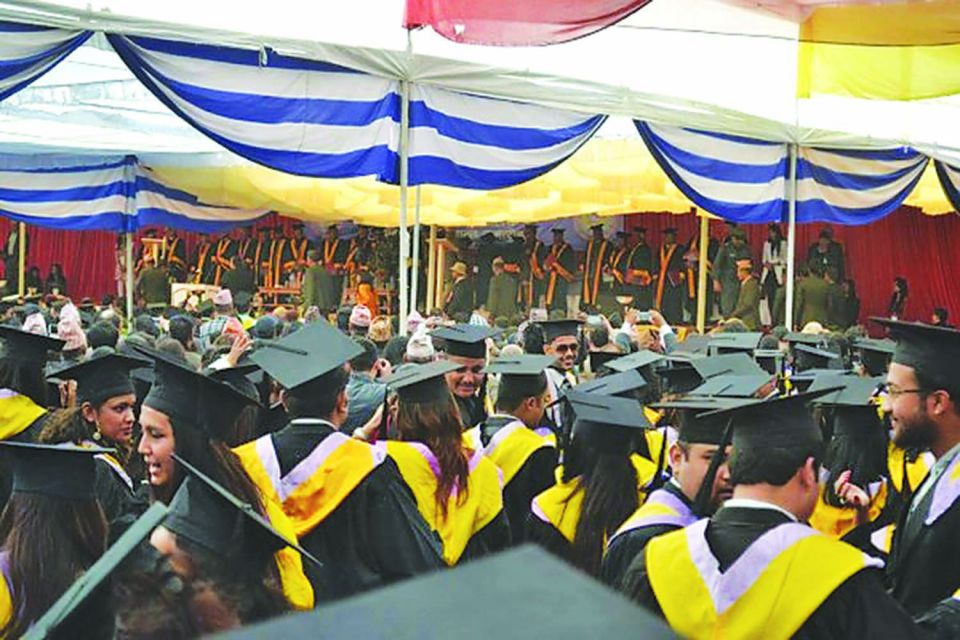122,000 got nod to study abroad in 2022. In 9 months this fiscal, 81,000 received permits.

On Monday, Kathmandu University (KU) announced that its student enrolment had decreased sharply in most of its schools. Even some programmes under the School of Medicine are short of students. Among more than a dozen varsities in the country, KU is known for providing quality education with the capacity for some 6,000 students. Yet, it is struggling to fill its seats, which is a worrying sign for the country’s higher education system, according to officials. The Post traces KU’s journey from the time of its establishment to its current travails.
When and how was the university established?
In his book A Journey Uphill, the founding vice-chancellor of Kathmandu University, Suresh Raj Sharma, writes that he had conceptualised a separate academic institution in 1981-82 as Tribhuvan University was in a chaotic state. At TU, it would take at least two-three additional years to complete any level of education. The academic calendar was never followed. The examination results were delayed and were disappointing. The oldest university in the country was neither in a position to expand its technical education nor willing to give affiliations. As a result, good students were leaving the country in search of better educational opportunities, Sharma writes.
Sharma, with the support of Sitaram Adhikari and Bhadra Man Tuladhar started the Kathmandu Valley College in the fiscal year 1984-85. The same college was transformed into Kathmandu University six years later. The parliament, in 1991, endorsed the Kathmandu University Act. Sharma was appointed its vice chancellor. He continued to lead the university until Dr Ram Kantha Makaju Shrestha replaced him in 2012.
How is the university different from others?
So far it is the first and only non-government university in the country. Though the government provides some of its budget, that is nearly not enough to cover its expenses. It does so through student fees and donations, in addition to government funds. The university is known for introducing applied and new courses along with a healthy teaching-learning environment. It was KU that first introduced the Bachelors in Business Administration course in the country, for instance.
Because it has tie-ups with several academic institutions around the world, it has been providing its students and teaching faculties exposure at the international level. These are some factors that make KU stand out among the universities.
What is the situation of student enrolment?
Bhola Thapa, vice-chancellor at the university, said some 30 percent seats in the university are currently vacant. KU runs around 200 programmes under seven schools in Kavre and Lalitpur. Except for the School of Law, all other schools under the university are short of students. The university has a capacity to enrol 6,000 students annually at its constituent and affiliated colleges combined.
 Except for the School of Law, all other schools under KU are short of students. Photo obtained by the Post
Except for the School of Law, all other schools under KU are short of students. Photo obtained by the Post
For the 307 seats under the School of Arts, for instance, only 152 students have been enrolled in various programmes. A total of 50 seats among 345 for the School of Education, too, are vacant. Admissions to programmes like Bachelors in Nursing under the School of Medical Science are also poor. Records at the University Grants Commission, the government entity that oversees university education, also show the decline in student numbers. Students choosing the university decreased to 16,046 in 2020-2021 from 18,643 in the previous fiscal year.
Why are student numbers plunging?
Brajesh Mishra, associate director at the Directorate of Admissions at KU, says they have yet to trace the cause for the decline. He, however, says the increase in the number of students travelling abroad could be one of the major reasons. As many as 122,000 students got No Objection Certificates to study abroad in 2022. And 81,000 have received their certificates in the past nine months of the current fiscal year. The number of students going to India also stands in thousands.
On average, 230,000 students get through grade 12 examinations every year. The pool of students for the Nepali universities remains around 90,000 after deducting the numbers of those opting for higher education abroad, including India. At a time of a decline in population growth, the students’ pool seems to have become saturated. “The problem could get worse in the future,” says Mishra. The university is phasing out some of its programmes following consistent decline in enrollments.
What are the other reasons?
Unlike other universities, KU was considered free from political wrangling. Except in rare cases, its leadership was largely free of controversy. However, in 2019, the university was padlocked for days following differences between the leadership and other staff. Similarly, several decisions of Makaju landed in controversy. At the time of his appointment, there were allegations that the Baburam Bhattarai government had appointed him vice-chancellor on the condition that Morang’s Birat Medical College and Rupandehi’s Devdaha Medical College would be granted university affiliation. They were eventually allowed to conduct MBBS courses as extended programmes. Makaju claimed that the two colleges would operate entirely under KU’s jurisdiction as extended programmes. However, it turned out, KU had given affiliation to the two colleges.
Makaju was blamed for monopolising decision-making. Incumbent Vice-chancellor Thapa, who was a registrar under Makaju, had in August 2018 blamed him for unilateral decisions over finances to appointments. The university got a bad reputation during his tenure.
University officials say the administrative and academic environment has improved after Thapa became vice-chancellor two years back. “However, we cannot rule out the lingering effect of the kind of negative image the university got under the previous leadership,” Bibhuti Ranjan Jha, a professor at the university, told the Post. “To make matters worse, some of the good faculty members have also quit over the years.”
University officials say the perception among the general public is that KU is an expensive university, which too has prevented it from attracting students from diverse communities. A large section of the society is even unaware of the university.
What is the government doing?
Thapa, the vice-chancellor, said he had informed the Ministry of Education about the problem. However, the government hasn’t done anything to increase enrolments. The University Grants Commission has come up with a plan to merge the colleges with low student numbers. Ram Kumar Phuyal, a member of the National Planning Commission, termed the phenomenon as a “worrying sign”.











